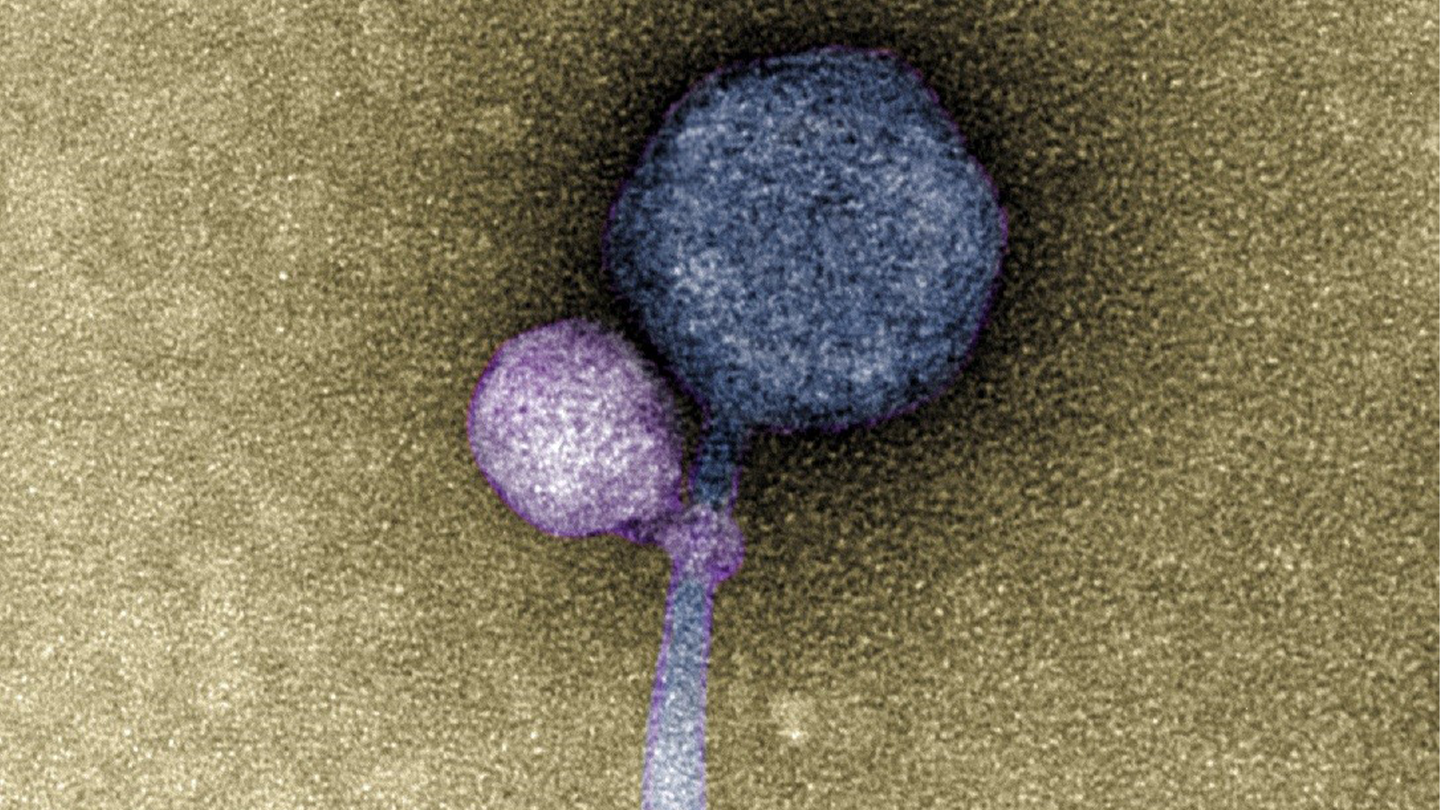Virus observed sucking on another virus’ ‘neck’ for the first time
This Mini-Flayer and Mind-Flayer virus are in a serious long-term relationship.

For the first time, scientists have observed one virus attaching itself to another virus. An electron microscope captured the interaction in stunning detail and shows how these two different viruses may have co-evolved. The findings were published in the Journal of the International Society of Microbial Ecology on October 31.
[Related: The deepest known ocean virus lives under 29,000 feet of water.]
The viruses in the study are both categorized as bacteriophages. These are a group of viruses that are known to infect bacteria. Bacteriophages also infect single-celled prokaryotic organisms known as archaea and are commonly called “phages.”
Some viruses called satellites (shown in purple) depend on both their host organism and another virus known as a helper to complete its life cycle. The satellite virus depends on the helper virus to build the protective shell that covers its genetic material called a capsid or to help it replicate its DNA. For this relationship to continue, the satellite and the helper must be close to one another for at least a little while, but there were no known cases of a satellite virus attaching to the helper until this discovery.
“When I saw it, I was like, ‘I can’t believe this,’” study co-author and University of Maryland, Baltimore County biologist Tagide deCarvalho said in a statement. “No one has ever seen a bacteriophage—or any other virus—attach to another virus.”
The students who isolated the satellite nicknamed it the MiniFlayer and dubbed its helper the MindFlayer. The team saw this viral relationship between the satellite MiniFlayer and helper MindFlayer while looking at some samples of a family of bacteriophage satellites that infect Streptomyces bacteria. They initially believed that the samples had been contaminated due to the large sequences of DNA and some smaller sequences of DNA that didn’t match anything they were familiar with.
They took detailed electron microscopy images that show 80 percent of helper viruses in this sample had a satellite bound at its “neck,” where the helper’s outer shell connects to its tail. The ones that did not still had remnant satellite tendrils at the neck that the team said looked like “bite marks.”
Next, they analyzed the genomes of the bacteriophages and bacterial hosts. The satellite viruses had genes that coded for their outer protein shell, but did not have the genes needed to multiply within bacterial cells. This evidence supported the idea that both types of bacteriophages were actually interacting with each other.
[Related: Ask Us Anything: Can viruses be good for us?]
They also saw that the satellite viruses did not have a gene that is necessary for them to integrate into the genome of bacterial host cells after they have entered them. Since most of the satellite viruses can hide in the host’s DNA, they can replicate once the right helper comes along. According to the team, the satellite thus attaches to the helper using a unique adaptation at its tail, so that it can survive without this key gene.
“Attaching now made total sense, because otherwise, how are you going to guarantee that you are going to enter into the cell at the same time? This satellite has been tuning in and optimizing its genome to be associated with the helper for, I would say, at least 100 million years,” co-author and University of Maryland, Baltimore County computational biologist Ivan Erill said in a statement.
As of now, this kind of relationship has only been observed in a laboratory setting. Understanding these long-term viral relationships could help scientists discover numerous other examples in nature.
“It’s possible that a lot of the bacteriophages that people thought were contaminated were actually these satellite-helper systems,” said deCarvalho. “So now, with this paper, people might be able to recognize more of these systems.”